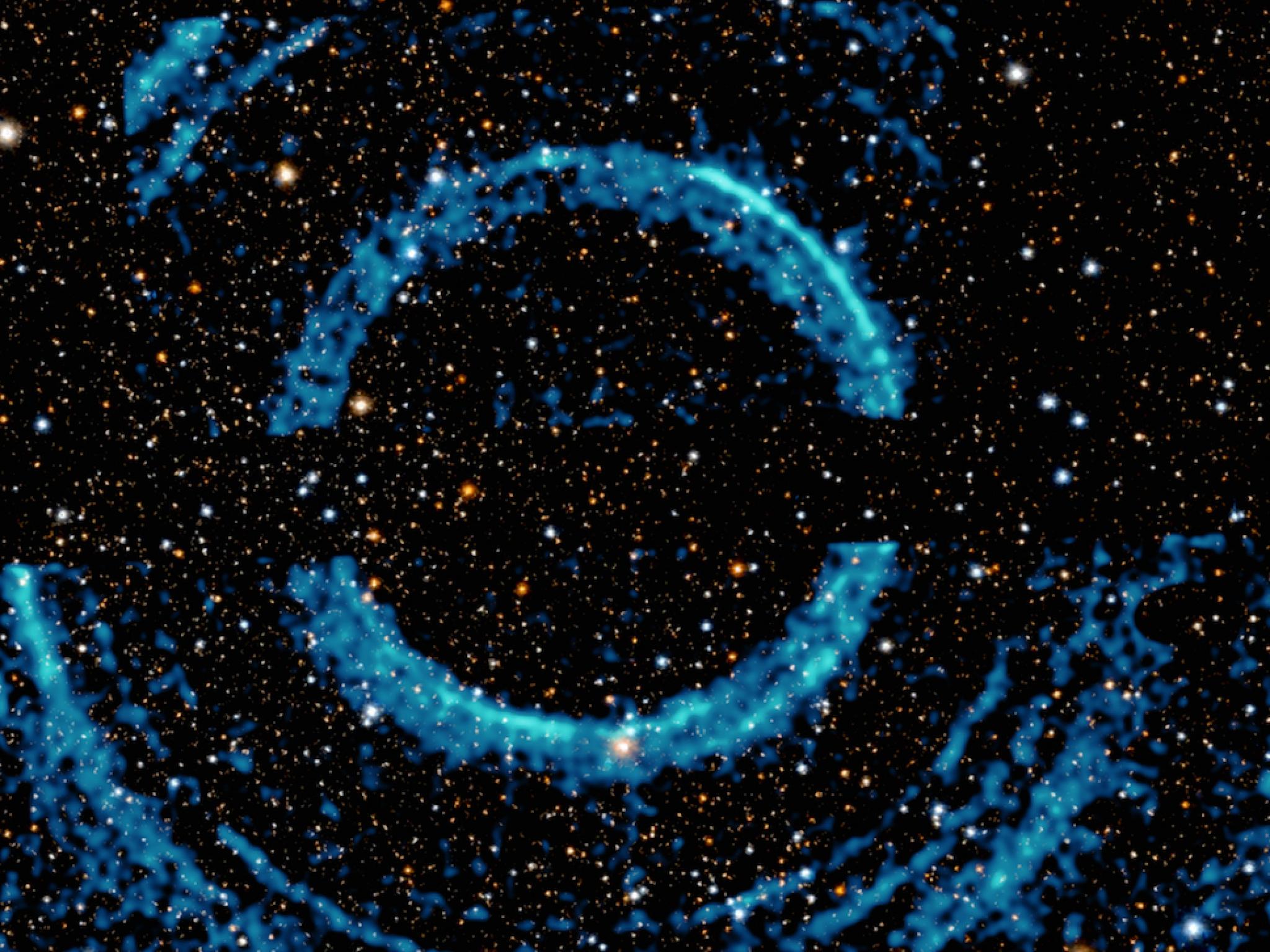
The unfathomable vacuum that is outer space is quiet — to the tune of zero decibels.
This is because particles vibrate when sound is present. In near-empty areas of space, there are no (or very few) particles to vibrate, therefore no sound. On Earth, sound primarily travels to the ears through vibrating air molecules.
But what if there was a cluster of galaxies — a galaxy cluster, if you will — so dense and filled with copious amounts of gas that envelop the hundreds or even thousands of galaxies within it, would that be enough to provide a medium for sound waves to travel?
Also read: Elon Musk's SpaceX Is Up, Up And Away With New Contract To Launch Japanese Communication Satellite
The short answer is yes, and you can listen to it below.
The misconception that there is no sound in space originates because most space is a ~vacuum, providing no way for sound waves to travel. A galaxy cluster has so much gas that we've picked up actual sound. Here it's amplified, and mixed with other data, to hear a black hole! pic.twitter.com/RobcZs7F9e
— NASA Exoplanets (@NASAExoplanets) August 21, 2022
The Perseus galaxy cluster's central black hole has been linked to sound since 2003. NASA said this is due to the fact that astronomers discovered that pressure waves emitted by the black hole generated ripples in the heated gas of the cluster, which may be interpreted as a note that humans are unable to hear.
That is now a thing of the past. What you just heard is the translation of astronomical data into sound. This new sonification, released by NASA in May, are the sound waves astronomers previously identified and were extracted and made audible for the first time.
Scaling the signals above their true pitch allowed for resynthesis into the range of human hearing. They are being heard at frequencies that are 144 quadrillion and 288 quadrillion times higher (meaning they’re very quiet) than their initial frequency.
“What we're listening to is essentially a re-sonification, so a data sonification of an actual sound wave in this cluster of galaxies where there is this supermassive black hole at the core that's sort of burping and sending out all of these waves, if you will,” NASA visual scientist Kimberly Arcand told NPR in May.
“And the scientists who originally studied the data were able to find out what the note is. And it was essentially a B-flat about 57 octaves below middle C. So we've taken that sound that the universe was singing and then just brought it back up into the range of human hearing — because we certainly can't hear 57 octaves below middle C.”
The Chandra X-Ray Observatory was the site used to pick up the data. The observatory also synthesized the sounds of the M16 Eagle Nebula “Pillars of Creation,” as well as the center of the Milky Way galaxy. You can listen to both below.
Photo: Courtesy NASA/CXC/U.Wisc-Madison/S. Heinz et al.; Optical/IR: Pan-STARR







